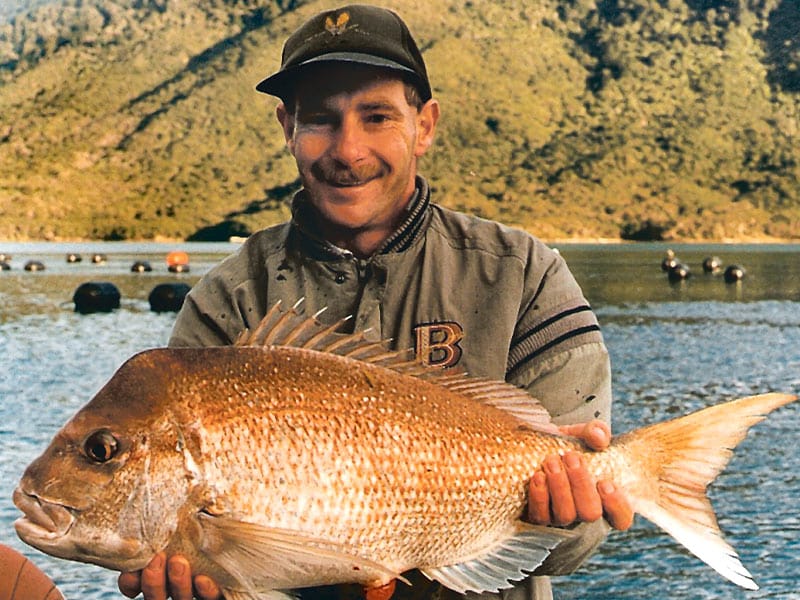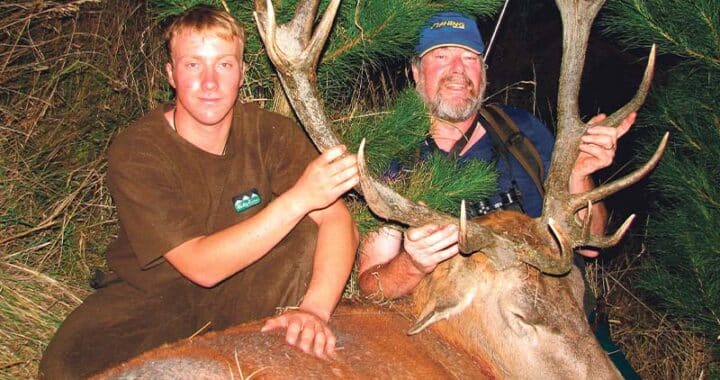Dodging the summer rush
4 min read
Rob Jones at 8am with one of the snapper he caught. Photo: Tony Orman
One Christmas-New Year, the late Rob Jones called in to check if I would be keen to try for snapper down the Pelorus. I reluctantly agreed, fully aware that the holiday period meant that every man and his dog, plus boat, were probably out in the water.
“Don’t worry about them,” Rob urged. “You dodge them just as the snapper do. But you’ll have to get out of the sack well before daylight.”
At five in the morning, we launched at the Havelock marina ramp and cruised from the marina, following the lights that mark the channel down the Pelorus Sound.
As we set up gear, Rob, a seasoned angler, shared his ‘holiday time’ tactics, saying that it was a myth that snapper vanished from the Sounds during Christmas-New Year.
“Snapper are a sensitive, often shy fish. Screaming boats and jet skis are an anathema to them. They like peace and quiet and that’s away up the side inlets.”
He was right. I often think of snapper in relatively shallow depths, such as the Marlborough Sounds, like trout. They spook easily and are wary. They are challenging.
By 8am, we each had four good snapper. At the same time, about 800 metres or more to the east on the main route down the Sound, we noticed the occasional boat ripping through.
We had enough fish and so decided to head back in the Havelock marina, just as the noisy ones were stumbling out of bed.
Similarly, indifferent weather can help to deter the rowdy sect. Those overcast days with a faint easterly blowing and even a misty rain are ideal conditions.
Wherever you are, treat snapper with utmost respect. You have to be stealthy. In the evening, start just before dusk, fish the change of light, till night and carry on into the darkness. Night can be great for snapper too.
One evening in early January, I decided to put Rob’s theory to the test. Starting at 8pm, I began fishing from my aluminium dinghy. A small snapper (1.5kg or so) came to the net; I let it go.
As night fell, the size of the catch increased; I hooked and landed a 3.65kg snapper. A big full moon peeked over the ridge to the east and flooded the sea’s surface with a soft light. I baited on a yellow-eyed mullet head and cast out well downstream from the boat. I mostly fish away from the boat especially in shallow water, again respecting the inborn alertness of snapper.
My two biggest snapper, both 7.7kg ones, were caught after sundown and in bright moonlight.
A few thoughts that might help in shallow water, whether it be the Marlborough Sounds or Tauranga Harbour, Manukau Harbour, or similar.
I like to fish a drop-off – the edge of a channel or between where two channels converge. Prospect the channel layout during the day and low tide.
Use berley, hung over the boat. Because it’s shallow water. you don’t need to sink the berley container.
Baits? Pilchards rate highly but best of all, fresh herring (yellow-eyed mullet) or garfish. Squid is underrated and resists spotties stripping your hook better than most baits. Freshwater eel is good and so is fresh kahawai. But recently, I’ve found anchovies to be the best bait. It’s advisable to take
a variety of baits, as snappers’ preference sometimes can vary.
In a dinghy, ease into the fishing spot rowing the last 100 metres, cast away from the boat and use as light a sinker as the tidal flow allows.
Avoid noise. In an aluminium dinghy, a sack or old piece of carpet dulls a dropped sinker and noise generally. Best of all, don’t drop sinkers. Ease the anchor over rather than heaving it.
A full tide about an hour or two after dark or dawn is the optimum combination of change of light and tide phase.
A landing net is far preferable to a gaff. Besides, it facilitates the release of fish. Stray line without any sinker. However, if there’s a significant current, then use a sinker and running rig.
Bait feeder reels are the ultimate for snapper fishing. Release big snapper – they are prime breeding stock. Instead, for the table, kill a 3kg or 4kg fish. And don’t kill your limit – limit your kill.
Lastly, remember that a vital factor in the success of snapper fishing is patience. You can have blank days but the next day may be a cracker. There may be blank periods, too, when for an hour or two, there’s no action, but then suddenly, the snapper switches into feeding mode and it’s all on.
Words by Tony Orman



